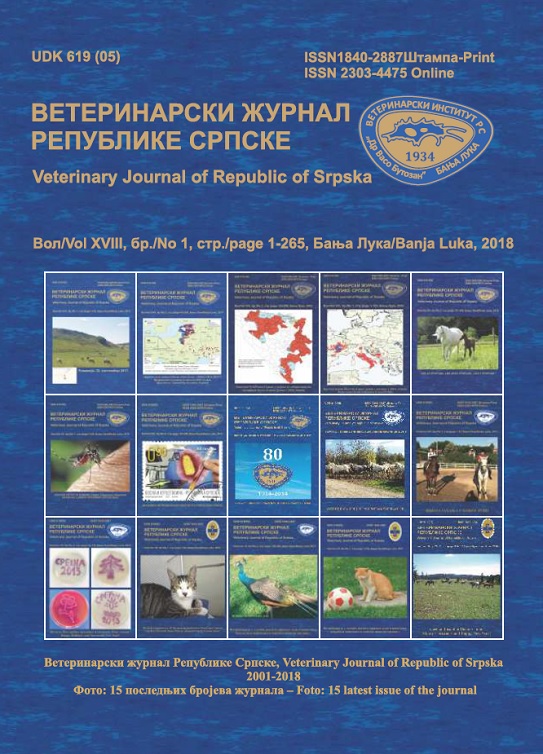THE IMPORTANCE OF TRITICALE IN ANIMAL NUTRITION
DOI:
https://doi.org/10.7251/VETJEN1801073GAbstract
Grains have great agronomic and economic importance and they are one
of the most important plants. Triticale is modern cereal grain, hybrid of wheat and
rye, which inherited the ability of the rye to survive the high frosts, but has a higher
protein value than rye, while higher grain yields and increased tolerance to diseases
were inherited from wheat. The way in which triticale will be used depends on the
characteristics of the variety. Triticale varieties of large and uniform grains which
have more proteins then starch are used as concentrated feed for poultry, ruminants
and nonruminants. Varieties that form large biomass, similar to rye, can be and are
grazed, or harvested for silage or hay and straw. Triticale grain has nutritional value
like wheat but with slightly more lysine amino acid. Triticale as a feed grain with
good essential amino acid balance, minerals and vitamins is primarily included in
livestock diets especially as an energy source. Depending on the type of domestic
animal and meal, triticale can be used in significant percentage. The advantage of
triticale over other cereals is that it has higher yields, a faster spring growth, and a
longer mowing time as a green animal feed, than for example rays or oats. Because
of all these advantages, triticale is suitable for planting especially in developing
countries.

